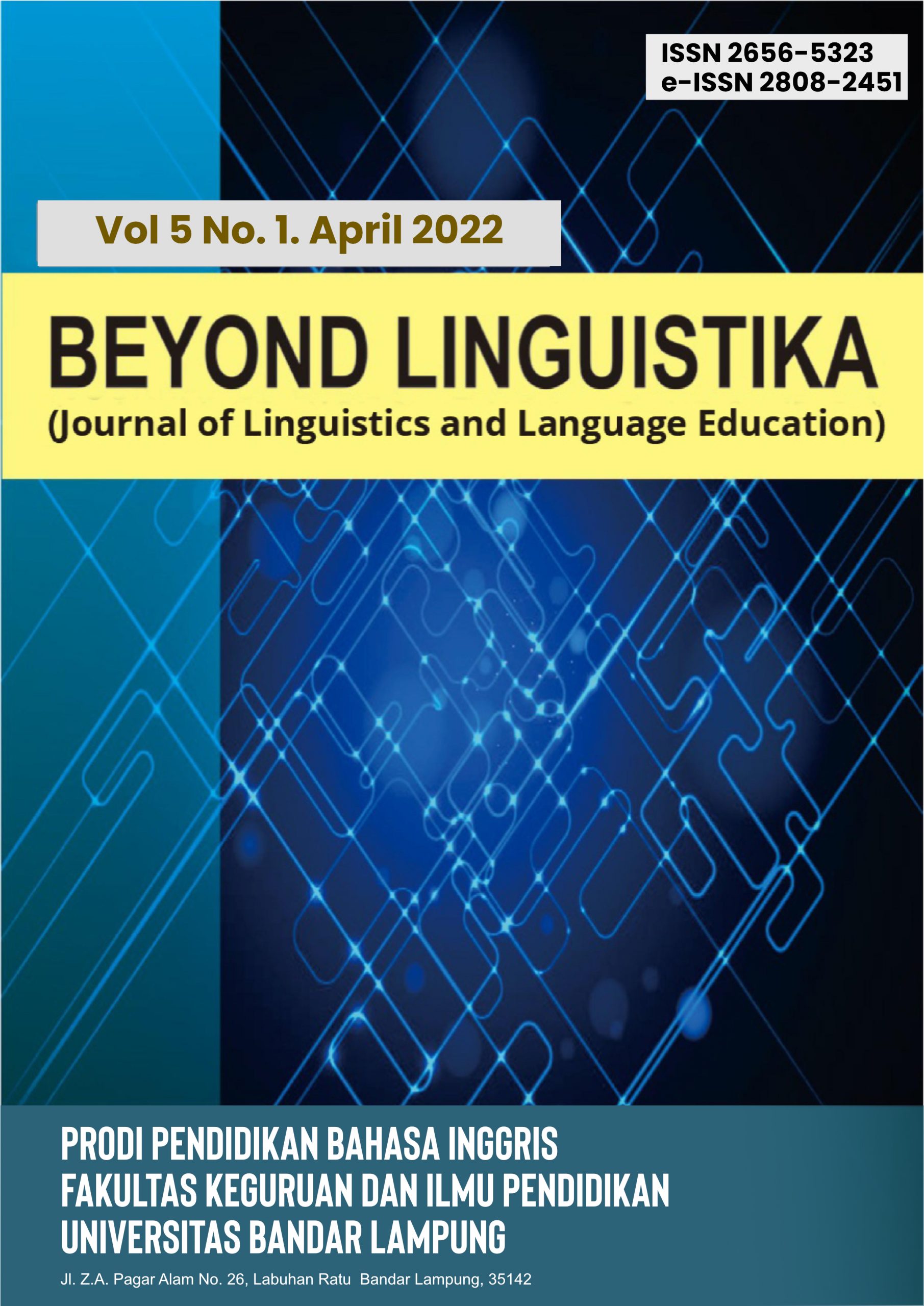STUDENTS' LEARNING MOTIVATION IN BLENDED LEARNING IN ENGLISH EDUCATION STUDY PROGRAM OF UNIVERSITAS BANDAR LAMPUNG
Abstract
The objective of this study is to analyze the students learning motivation when they experience blended learning. Researchers only focus on clarifying student motivation when using blended learning system and the factors of blended learning affect motivation at third semester of English Study Program Faculty of Teacher Training and Education Universitas Bandar Lampung. This research used case study method. The research was done at English Education Study Program Faculty of Teacher Training and Education Universitas Bandar Lampung consisisted of forty six students. Data gathering was done by doing questionnaire and interview. The data was analyzed by combining the result from the questionnaire and interview. The result of this research showed that learning with the blended learning system can motivate students learning. The combination of both instruments is that blended learning system helps them to motivating in learning. They mostly agreed that this learning system could make them more interested in learning.
Keywords
Full Text:
PDFReferences
in Sports. Sports Rec. https://www.sportsrec.com/8128336/the-theories-of-motivation-in-sports
Alhazbi, S. (2016). Active Blended Learning to Improve Students’ Motivation in Computer Programming Courses: A Case Study. 187–204. https://doi.org/10.1007/978-3-319-15323-0
Bouilheres, F., Le, L. T. V. H., McDonald, S., Nkhoma, C., & Jandug-Montera, L. (2020). Defining student learning experience through blended learning. Education and Information Technologies, 25(4), 3049–3069. https://doi.org/10.1007/s10639-020-10100-y
Bovermann, K., Weidlich, J., & Bastiaens, T. (2018). Online learning readiness and attitudes towards gaming in gamified online learning – a mixed methods case study. International Journal of Educational Technology in Higher Education, 15(1). https://doi.org/10.1186/s41239-018-0107-0
Hrastinski, S. (2019). What Do We Mean by Blended Learning? TechTrends, 63(5), 564–569. https://doi.org/10.1007/s11528-019-00375-5
Instrumentality, I., & Process, M. (2014). Motivation defi ned. 316–334. https://nscpolteksby.ac.id/ebook/files/Ebook/Business Administration/ARMSTRONGS HANDBOOK OF HUMAN RESOURCE MANAGEMENT PRACTICE/19 - Motivation.pdf
Islam, S., Haque, F., & Haque, A. (2014). Motivational Theories – A Critical Analysis Motivational Theories – A Critical Analysis. Psychology, 8(June), 62–68. https://www.researchgate.net/publication/306255973
Kintu, M. J., Zhu, C., & Kagambe, E. (2017). Blended learning effectiveness: the relationship between student characteristics, design features and outcomes. International Journal of Educational Technology in Higher Education, 14(1). https://doi.org/10.1186/s41239-017-0043-4
Nursalam, 2016, metode penelitian, & Fallis, A.. (2013). 済無No Title No Title. Journal of Chemical Information and Modeling, 53(9), 1689–1699.
Saputra, Y. N. (2018). Pentingnya Menumbuhkan Motivasi Belajar Siswa. December 2018. https://doi.org/10.31227/osf.io/z83w4
Sidabalok, D. M., & Fitriana, S. (2018). THE ANALYSIS OF STUDENTS’ CRITICAL THINKING IN ONLINE DISCUSSION FORUM BY USING SCHOOLOGY IN SPEAKING B CLASS OF FIRST SEMESTER STUDENTS OF FKIP UBL. LINGUISTIKA, 9(2).
Ginola, D., & Sidabalok, D. M. (2016, May). The implementation of flipped classroom by using schoology in speaking II class of English education study program of teacher training and education faculty of bandar lampung university. In International Conference on Education and Language (ICEL) (p. 199).
DOI: http://dx.doi.org/10.36448/bl.v5i2.2899
Refbacks
- There are currently no refbacks.















